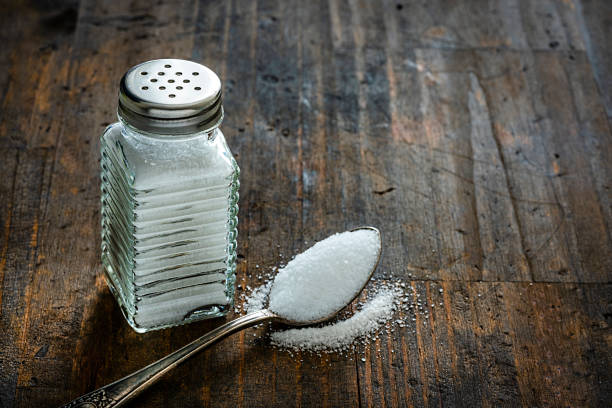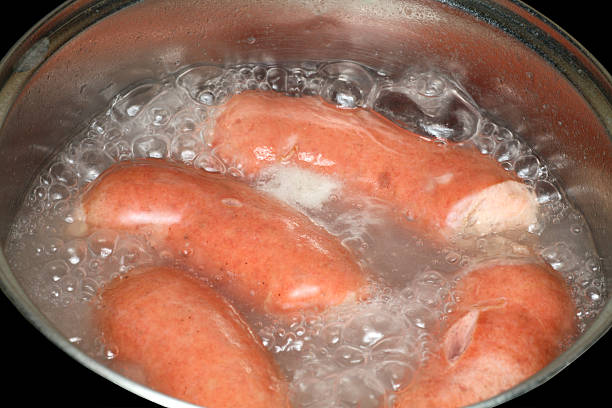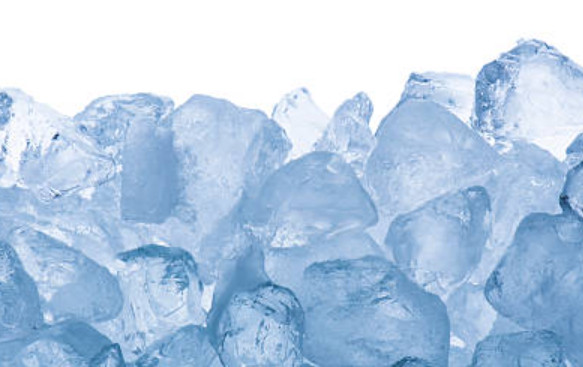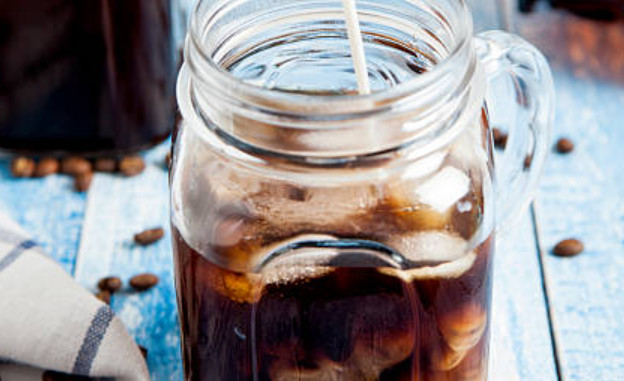How Much Sodium In A Teaspoon Of Salt? | Sodium And Salt
Have you ever wondered how much sodium in a teaspoon of salt? You may find yourself asking this question if you regularly focus on eating a balanced and healthy diet. Knowing the amount of sodium that’s present in common ingredients like table salt can help you adjust other elements of your meal – like meat, dairy, or veggies – accordingly. In this blog post, we’ll explore exactly how much sodium there is in one teaspoon of salt and discuss some important facts about dietary sodium content and recommended daily intake for people of all ages.
Contents
Learn about Sodium

Sodium, which we consume mainly as table salt (sodium chloride), is essential for human health. It helps maintain fluid balance, transmit nerve impulses, and influence muscle contraction and relaxation. However, consuming too much sodium can have negative effects, especially on heart health. Most people eat far more sodium than recommended, so paying attention to sodium content of foods and overall intake is important.
Overview of sodium’s role in health and diet
Sodium plays a crucial role in many of the body’s normal functions, including fluid balance, nerve transmission, and muscle control. The kidneys regulate sodium levels in the blood and body fluids. Consuming excess sodium causes the body to retain water in order to dilute the sodium. This can increase blood volume and lead to high blood pressure.
The importance of understanding and managing sodium intake
Given its impact on heart health, most public health organizations recommend limiting sodium intake to 1500-2300 mg per day. However, the average American consumes over 3400 mg daily. Understanding sources of dietary sodium and learning ways to reduce intake are key steps towards better health.
Sodium Essentials
Understanding Sodium and Its Importance
Sodium is a mineral and electrolyte that helps regulate the amount of water in and around cells. It is essential for normal nerve and muscle function. Along with chloride, sodium helps transport nutrients into cells and remove waste. A certain level of sodium in the blood and fluids is vital for good health.
How Much Sodium Do I Need?
Experts recommend limiting sodium intake to 1500-2300 mg per day. Individual needs vary based on age, health conditions, and sodium sensitivity. The 1500 mg minimum protects most people against deficiency. Those with high blood pressure or heart failure need to stay under 1500 mg. Older adults, African Americans, and those with diabetes or chronic kidney disease tend to be more sodium sensitive.
Sodium Sensitivity and Individual Differences
People have varying reactions to sodium that relate to genetics, age, and health status. Those with sodium sensitivity retain more sodium and experience greater blood pressure response from high intake. African Americans, the elderly, and those with hypertension or kidney disease tend to be more sodium sensitive. Paying attention to individual sodium tolerance can help manage risks.
How Much Sodium In A Teaspoon Of Salt?
To answer the question how much sodium in a teaspoon of salt, one teaspoon of salt contains 2,300 milligrams (mg) of sodium. This amount is equal to 1/6th of the daily recommended intake for adults over the age of 19.
Sodium Sources and Recommendations
Decoding Sodium on Food Labels
The Nutrition Facts label lists sodium content per serving in milligrams. Compare brands and choose options with less sodium. Look for low sodium claims like “light in sodium” (140 mg or less per serving) or “very low sodium” (35 mg or less). Be aware that package size affects the number of servings.
High-Sodium Foods to Watch Out For
Processed and packaged foods, canned items, frozen meals, pizza, bread, cold cuts, soups, sauces, snacks, and fast food are often high in sodium. Chicken, pork, and deli meats contain added sodium. Condiments like soy sauce, ketchup, mustard, and salad dressings increase sodium intake. Certain medications also contain sodium.
The Potassium-Sodium Balance
Along with reducing sodium intake, increasing potassium can help control blood pressure. Potassium blunts sodium’s effects on blood vessels. Good sources include fruits, vegetables, beans, dairy foods, fish, and potatoes. Aim for 4700 mg of potassium per day as part of the Dietary Approaches to Stop Hypertension (DASH) diet.
Sea Salt vs. Table Salt
Comparing Sea Salt and Table Salt
Sea salt is produced through evaporation of seawater rather than mining rock salt deposits. It tends to have a coarser, flakier texture and more pronounced flavor than refined table salt. However, the sodium content is comparable – around 40% sodium by weight for both sea salt and table salt.
Mineral Content and Health Implications
Sea salt contains traces of minerals like potassium, iron, and zinc that are removed from table salt during processing. The small amounts of minerals make little difference nutritionally. Neither sea salt nor table salt provide enough minerals to impact health compared to dietary sources.
Environmental Considerations
Sea salt production has a lower environmental impact than conventional salt mining. However, it shares issues like habitat loss and pollution. Solar evaporation of seawater uses less energy than high-temperature extraction and refining of rock salt into table salt. But sea salt’s packaging and global transport still leave a significant carbon footprint.
Sodium and Your Health
The Heart-Sodium Connection
Eating too much sodium causes your body to hold extra fluid, placing strain on the heart and blood vessels. This increases the risk of high blood pressure, heart attack, stroke, and heart failure. Limiting sodium can lower blood pressure and improve heart health, especially for those with hypertension, heart disease, or diabetes.
Sodium’s Impact Beyond the Heart
A high sodium diet is linked to worse outcomes in people with kidney disease. It may also negatively impact bone health by promoting calcium excretion through the kidneys. Evidence on the effects of sodium on athletic performance is mixed. Extremely high or low sodium intake can impair performance, while moderate consumption may benefit endurance athletes.
Managing Sodium Intake for Health
Gradually reducing sodium intake can help Blend unsalted spices, herbs, citrus, vinegars, and salt-free seasonings for flavor. Opt for fresh, frozen, or no-salt-added canned vegetables. Choose fresh meat and poultry rather than deli or processed varieties higher in sodium. Limit condiments and snack foods. Check labels and select low-sodium options.
Practical Tips for Sodium Management

Cooking and Seasoning Without Excess Sodium
Boost flavor with lemon, garlic, onions, ginger, vinegar, spices, herbs, and salt-free seasoning blends. Rinse canned foods to remove some sodium. Use vegetable broth or no-salt varieties for cooking. Avoid adding salt at the table. Marinate meats with acidic ingredients instead of soy sauce. Try squeezing lemon over fish instead of salt.
Ask for sauces and dressings on the side. Opt for grilled, baked, or steamed dishes instead of fried. Share or take home part of high-sodium meals. Look up sodium counts for fast food and make lower-sodium choices. Compare labels and choose packaged foods with less sodium. Rinse canned beans and veggies before eating.
Tools and Resources for Sodium Management
Use apps like MyFitnessPal to track sodium consumption. Read nutrition labels closely, especially the sodium per serving. Choose low or reduced sodium products. Consult sites like American Heart Association, Mayo Clinic, and Dietary Guidelines for Americans for tips.
Beyond Personal Choice: Sodium in Society
The History of Salt in Human Civilization
Salt’s ability to preserve food enabled civilization. It was traded as currency in ancient times. Salt production and trade routes shaped history and geography. Wars were fought over salt. The high value but restricted supply of salt made it a marker of social status in some societies. Salt remains essential for industry and food security today.
Public Health Initiatives and Sodium Reduction
Many countries have launched public health campaigns to reduce sodium intake through product reformulation, labeling, taxation, and setting sodium reduction targets. For example, the UK program led to a 15% decline in population sodium intake. Some US cities have established voluntary sodium reduction programs with the packaged food industry.
Sodium in Medications and Supplements
Many common over-the-counter and prescription medicines contain substantial amounts of sodium. These include antacids, ibuprofen, amoxicillin, and corticosteroids. Oral rehydration solutions and IV fluids also contain sodium. Being aware of all sources of sodium intake can help manage overall consumption.
Conclusion
Sodium is an essential nutrient, but most people consume excess amounts that may increase the risk of heart disease and other health problems. Understanding sodium content of foods, minimizing processed items and salt use, and boosting potassium intake can help reduce sodium consumption and improve health, especially for those who are sodium sensitive. Population-level initiatives also play a key role in lowering sodium intake across entire countries and communities. Being mindful of sodium sources and intake provides significant benefits for both individual and public health.
https://bamboowokmanvel.com/food-drink/cooking-recipes/
Harmony Saunders is the CEO and founder of Bamboo Wok, a family-owned and operated Chinese restaurant that has been serving the Manvel, Rosharon, and Alvin communities for more than nine years. Our delicious dishes are made from scratch with the best ingredients, vegetables are fresh cut daily in our kitchen, and poultry is delivered every two days.
So whether you’re craving Chinese food for the family or need catering for your next event, please give us a try! We know you won’t be disappointed with our fresh, authentic Asian fare.



















